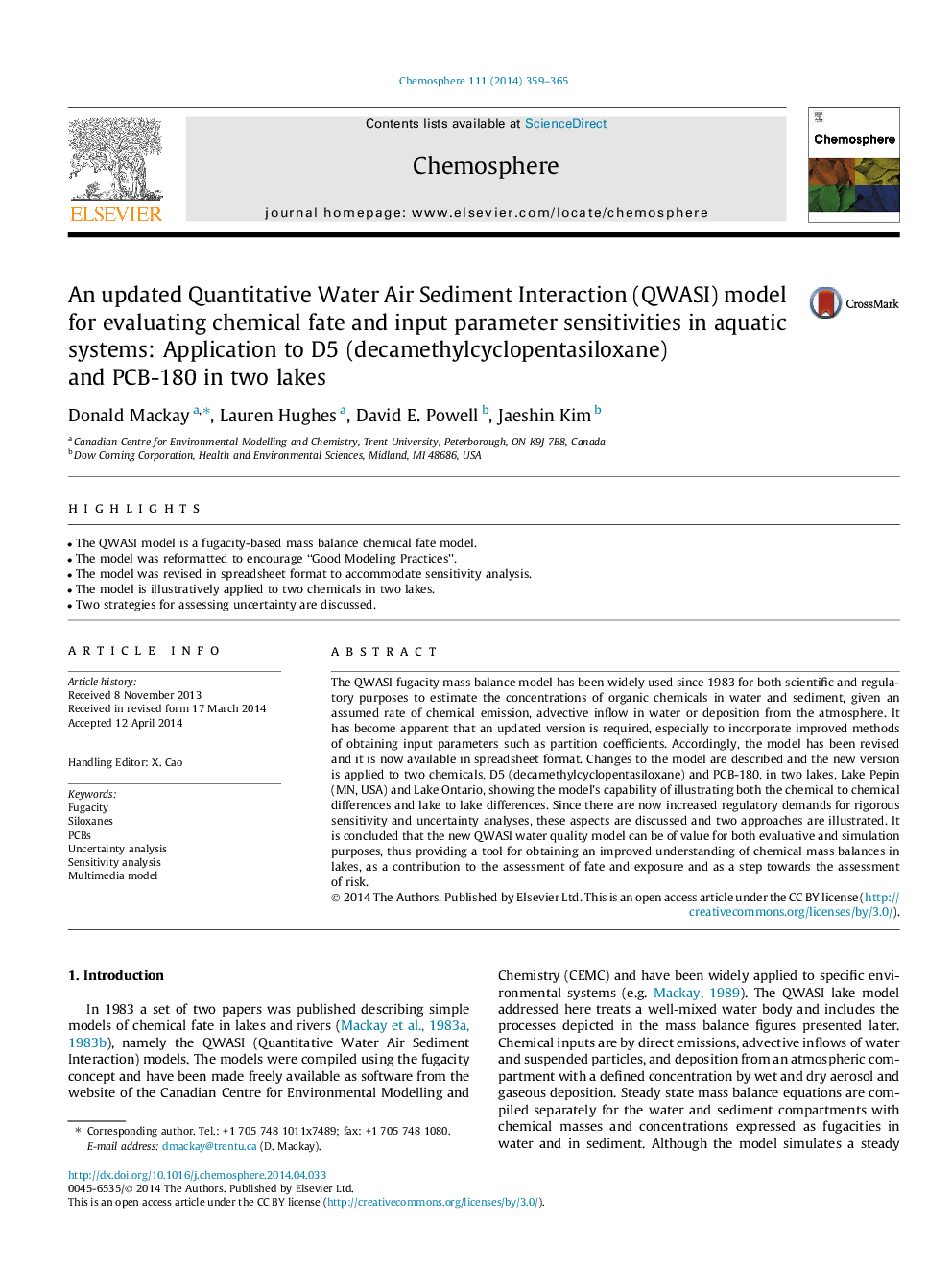| Article ID | Journal | Published Year | Pages | File Type |
|---|---|---|---|---|
| 6308698 | Chemosphere | 2014 | 7 Pages |
Abstract
The QWASI fugacity mass balance model has been widely used since 1983 for both scientific and regulatory purposes to estimate the concentrations of organic chemicals in water and sediment, given an assumed rate of chemical emission, advective inflow in water or deposition from the atmosphere. It has become apparent that an updated version is required, especially to incorporate improved methods of obtaining input parameters such as partition coefficients. Accordingly, the model has been revised and it is now available in spreadsheet format. Changes to the model are described and the new version is applied to two chemicals, D5 (decamethylcyclopentasiloxane) and PCB-180, in two lakes, Lake Pepin (MN, USA) and Lake Ontario, showing the model's capability of illustrating both the chemical to chemical differences and lake to lake differences. Since there are now increased regulatory demands for rigorous sensitivity and uncertainty analyses, these aspects are discussed and two approaches are illustrated. It is concluded that the new QWASI water quality model can be of value for both evaluative and simulation purposes, thus providing a tool for obtaining an improved understanding of chemical mass balances in lakes, as a contribution to the assessment of fate and exposure and as a step towards the assessment of risk.
Related Topics
Life Sciences
Environmental Science
Environmental Chemistry
Authors
Donald Mackay, Lauren Hughes, David E. Powell, Jaeshin Kim,
